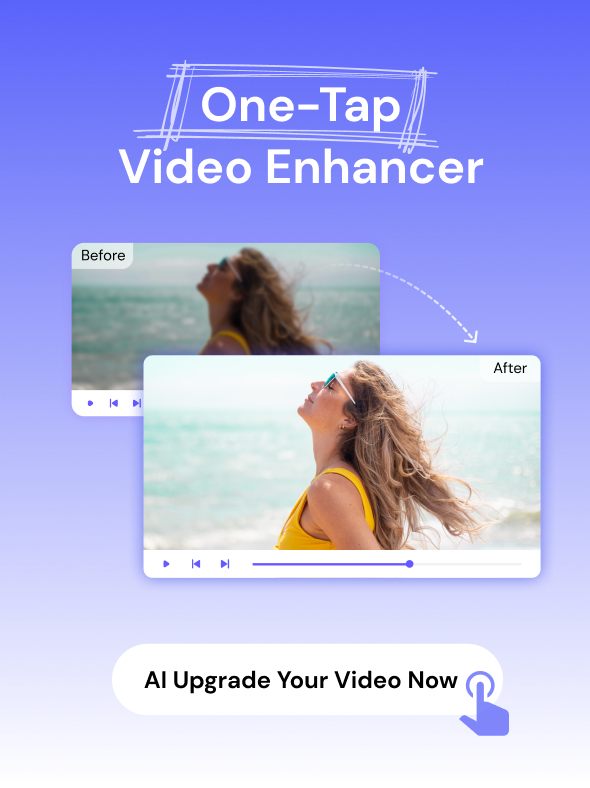Dr. Martin Luther King's I Have a Dream speech is among the most renowned. It was given to an estimated 250,000 individuals in Washington, D.C., 55 years ago for the protection of national rights. People might not have heard about the speech if the sound system had not been repaired swiftly. It was revealed that someone had destroyed the sound system soon before the event began.
Speeches, as shown by Dr. King, can move mountains. While anybody may deliver a speech, having the correct goal and awareness of the context and your listeners can assure its efficacy. That is why it is important to understand the various sorts of speeches and how to use them to your benefit. However, if you don't know about the different types of speeches, you'll find them in this article. Let's get started!
Part 1: 4 Types of Speech According to Purpose
According to the purpose, there are four kinds of speeches: those that aim to inform, those that teach, those that convince, and those that amuse.
1. Informative Speech

People who deliver informative speeches go into the crowd to enlighten their listeners with fresh knowledge on a certain topic. They deliver a speech in which they discuss themes like the social and economic changes in the town, but they do not use any visual aids in the presentation.
Instead, they depend on enlightening information, facts, and data to ensure that the audience takes away something useful from the presentation. You've probably experienced the advantages of an instructive speech without even realizing it if you've ever visited a gallery and had a guided tour. An example of an instructive speech is each time a lecture is delivered to enlighten the audience by providing specifics and information about a certain subject.
Examples
- Biography of your favorite actor
- The declaration of war by Adolf Hitler
- Gaza trip by Golda Meir
2. Persuasive Speech

Speeches intended to convince an audience that a viewpoint presented by the speaker is the correct one are called persuasive speeches. These are all instances of persuasive speeches, whether you're debating what to eat for dinner or which political position makes the most sense. The majority of individuals, while attempting to convince an audience that their point of view is correct, will employ evidence in the form of facts to support their case.
Using statistical studies to establish your argument will always be more likely to win people over to your side. It is among the best ways to ensure that your persuasive message does the tactic, which implies that using this method to develop your reasoning will always be more effective.
Examples
- I Have a Dream by Martin Luther King Jr.
- The Gettysburg Address by Abraham Lincoln
- Women Rights Are Human Rights by Hillary Clinton
3. Entertaining Speech

The purpose of entertaining speeches is to make the audience laugh. Entertaining speeches are often less formal and shorter than standard presentations. Instead of providing the audience with facts and data, entertaining speeches express feelings to the audience. Instead, they often incorporate comedic elements, such as humorous anecdotes. Birthday parties and weddings are two occasions that often include amusing speeches. There are many different kinds of amusing speeches, such as the speech given by the best man at a wedding or the speech given by the principal before a school talent show.
Examples
- Jay Leno at White House
- Jerry Seinfeld's Clio Award Speech
- Ellen DeGeneres at Tulane University
4. Demonstrative Speech

Demonstrative speeches are given to enlighten an audience on a subject or concept they are unfamiliar with. They often use visual aids to explain something better or discuss something more in-depth. A speech that shows how to do something is called a demonstrative speech. Although it is easy to mistake a demonstrative with an informative speech, a demonstrative statement genuinely does explain how to do something.
For instance, a technology corporation may make a lecture in which they demonstrate their newest products. They are giving a lecture to the general public in which they demonstrate how their new items function while at the same time telling the audience about their newest offerings.
Examples
- How to make a pizza
- How to arrange flowers
- How to decorate a room
Before starting your presentation, you know whether it will be informative, demonstrative, entertaining, or persuasive. However, since every speaker has their presentation style, the four types can end up overlapping.
In most informational speeches, people get bored, so to keep the audience's attention, the presenter has to add some entertaining or demonstrative content to their speeches. This ends up making your presentation a hybrid (i.e., a mixture of different speech types).
Part 2: 4 Types of Speech According to Delivery
The method in which the speech will be delivered to the audience is one approach to categorizing speeches. This categorization is based on the mechanism of delivery. A competent speaker will also consider the delivery technique or how the message will be delivered to the audience. The following are the different types of speeches according to delivery:
1. Impromptu Speech
The first type of speech according to delivery, is impromptu speech. It is possible to give a speech without any previous preparation or rehearsal time, and this kind of speech is referred to as an impromptu speech. In most cases, you are asked to deliver an impromptu speech at a function or another occasion by a person who approached you on the spot.
Since there is no time for preparation, delivering an impromptu speech may sometimes seem scary and generate great stress since there is no way to anticipate what will be said. Nevertheless, if you have some direction and experience under your belt, you can give a spontaneous speech with more assurance.
2. Extemporaneous Speech
Extemporaneous speech is delivering a properly prepared speech in a conversational tone utilizing short notes. The extemporaneous speaker may make and keep eye contact with the audience and judge how well they comprehend the speech as it develops by utilizing notes rather than a complete text.
The chance to analyze also provides an opportunity to reiterate any notion or idea the listener seems to be having difficulty absorbing. Assume you're talking about workplace safety and use the phrase sleep deprivation. If you observe your audience's eyes glazing over, it may not be due to sleep disturbance but rather to their ambiguity about what you mean. If this occurs, you may provide a brief explanation.
3. Manuscript Speech
Manuscript speech is the verbalization of a written message word for word. Except when employing visual assistance, the speaker in a manuscript speech keeps their focus on the written page. The benefit of reading from a manuscript is that the original words are precisely repeated. For example, reading a declaration regarding your company's legal obligations to consumers may need that the original wording is correct.
The only faults in hearing one word at a time in sequence would be a mispronunciation of a term or tripping over intricate phrase structure. However, there are expenses associated with manuscript speaking. For starters, it's a boring method to present unless the speaker has practiced the reading as a full-fledged performance replete with vocal emotion and gestures.
4. Memorized Speech
Memorized speech is the rote recital of a written message retained in memory by the speaker. When it comes to speeches, memorizing might be beneficial when the message must be precise, and the speaker does not want to be constrained by notes.
Memorization has the benefit of allowing the speaker to keep eye contact with the audience during the speech. Being note-free allows you to roam the stage freely and create movements with your hands.
Part 3: 10 Types of Speeches According to Special Occasion
Many engaging presentations are classified as special-occasion addresses. All the speeches in this category commemorate the importance of certain events. There are many sorts of occasional speeches:
- Presentation Speech: A presentation speech is a short speech delivered to accompany the giving of a medal of honor. Presentation speeches may be as brief as This year's winner of the Schuman Public Speaking Honor is Wilhelmina Jeffers, or they can continue up to five minutes as the presenter discusses why the honoree was selected for the award.
- Dedication Speech: When a new business opens, a structure is named after anyone, a plaque is put on a wall, a new library is finished, and so on, a dedication speech is given. These speeches are intended to emphasize the project's significance and potentially those to whom it has been dedicated.
- Acceptance Speech: When accepting a medal, honor, or present during an awards ceremony, an acceptance speech is given. It's in response to a presenting speech. An acceptance speech is delivered after a person gets an award or reward. In this case, the person generally thanks those who helped them get thus far and expresses sincere gratitude and appreciation for the prize.
- Introduction Speech: An introduction speech is a brief speech by the ceremony's host to promote another presenter and their speech. A speech of introduction, like any other speech, should be comprehensive with a clear introduction, body, and conclusion in less than two minutes.
- Welcome Speech: The purpose of the welcome speech or presentation is to welcome and greet the audience. The key distinction between this speech and the introductory speech is that this type of speech concentrates on the audience rather than the impending guest speaker. A welcome speech is given to assemble people or groups of people.
- Toast Speech: A toast is a speech used to congratulate, thank, or commemorate someone. Toasts may be spoken to congratulate someone on an award, a new job, or their marriage. You may also toast someone to express gratitude for anything they have done.
- Eulogy Speech: A eulogy speech is delivered in memory of someone who has passed away. Unless you are a pastor, priest, imam, or another religious leader, you are unlikely to be called upon to offer many eulogies in your lifetime. When it comes time to offer a eulogy, it's important to know what you're doing and appropriately prepare your words.
- Tribute Speech: Tributes are speeches at a funeral, retirement party, or another gathering to honor someone. A tribute should be genuine, concentrate on an individual's strengths, and highlight achievements and desirable attributes.
- Roast Speech: The roast speech is intriguing and unusual since it is intended to laud and mock the person being honored simultaneously. Roasts are usually offered at the end of a banquet to recognize someone's life accomplishments. For many years, the television network Comedy Central has hosted celebrity roasts.
- Farewell Speech: A farewell speech is one in which you say your last goodbyes to a group of people. If you're going far away or heading overseas, you may offer a goodbye speech to your loved ones. Farewell speeches generally elicit powerful emotions in both the presenter and the listener because they have a melancholy tone.
Hundreds of occasions and events in one's life, where he might be asked to give a speech. It could be his son's birthday, his dad's eulogy, a toast to his friend, etc. To deliver a perfect occasional speech, you must keep the following aspects in mind:
- Don't take more than the allotted time
- Use the correct facts
- Understand the type of occasion
Conclusion
History has shown that speeches can influence the thinking and mindset of the audience. One of the most common attributes of great leaders is their way of giving the right speeches on the right occasion to keep the audience trust. If you also wish to deliver a good speech, you must know the different kinds of speeches. And we hope that you know the different types of speeches after reading this article.



